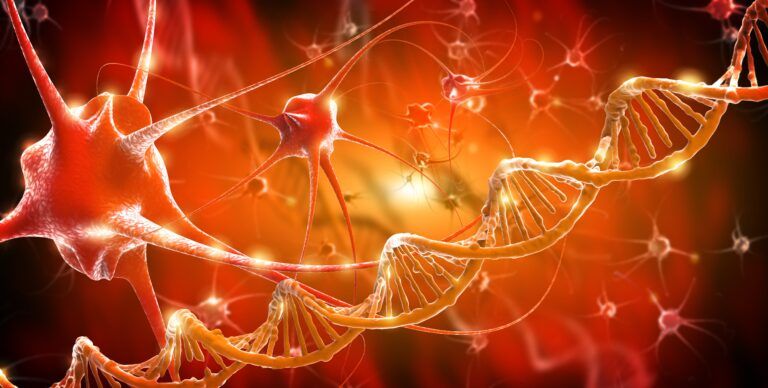In the vast and intricate tapestry of human biology, few threads are as compelling and complex as genetics. These microscopic strands of DNA hold the codes that define us, from the color of our eyes to our predispositions to certain health conditions. Among the myriad of mysteries they unlock, one area that has garnered significant attention in recent years is the role of genetics in neurological disorders, also known as neurogenetics. For families navigating the labyrinth of neurology, understanding the genetic underpinnings can be both enlightening and daunting. This guide aims to shed light on the profound connection between our genes and neurological conditions, offering families clarity, hope, and a path forward in their journey. Whether you’re a concerned parent, a curious individual, or someone living with a neurological disorder, this exploration into the world of genetics will provide valuable insights and empower you with knowledge. Join us as we delve deep into the genetic blueprint of neurological disorders and discover what every family should know.
The Genetic Blueprint: A Primer
Before diving into the specifics of neurological disorders, it’s essential to grasp the basics of genetics. Every cell in our body contains DNA, a long molecule that carries our genetic information. This DNA is organized into structures called chromosomes, and humans typically have 46 of them. Within these chromosomes are genes, which are segments of DNA that dictate how our bodies grow, develop, and function.
When it comes to genetics, neurological conditions can be caused by a variety of genetic factors and mechanisms. Here’s a breakdown of the primary genetic causes of neurological disorders:
Single Gene Mutations (Mendelian Disorders):
Some neurological conditions are caused by mutations in a single gene. These disorders often follow Mendelian inheritance patterns, such as autosomal dominant, autosomal recessive, or X-linked. Examples include:
- Huntington’s disease (autosomal dominant mutation in the HTT gene)
- Friedreich’s ataxia (autosomal recessive mutation in the FXN gene)
- Duchenne muscular dystrophy (X-linked mutation in the DMD gene)
Multiple Gene (Polygenic) Involvement:
Some disorders arise from the combined effects of mutations in multiple genes, often in conjunction with environmental factors. These are termed polygenic or complex disorders. Alzheimer’s disease, for instance, has several genetic risk factors, with the APOE ε4 allele being the most prominent.

Copy Number Variations (CNVs):
CNVs are alterations in the DNA that result in the cell having an abnormal number of copies of one or more sections of the DNA. CNVs can be associated with various neurological disorders, including some forms of epilepsy and autism spectrum disorders.
Mitochondrial DNA Mutations:
The mitochondria have their own DNA, separate from the nuclear DNA. Mutations in mitochondrial DNA can lead to neurological disorders since the brain is highly dependent on the energy produced by mitochondria. Examples include Leber’s hereditary optic neuropathy and some forms of mitochondrial myopathy.
Repeat Expansion Disorders:
Some neurological disorders are caused by the abnormal repetition of short sequences of DNA. Over time, these repeats can expand, leading to disease. Examples include:
- Huntington’s disease (CAG repeat expansion)
- Fragile X syndrome (CGG repeat expansion)
- Spinocerebellar ataxias (various repeat expansions)
Epigenetic Changes:
Epigenetics refers to changes in gene activity that don’t involve alterations to the underlying DNA sequence. These changes can affect gene expression and are implicated in some neurological conditions. Rett syndrome, for instance, involves mutations in the MECP2 gene, which plays a role in epigenetic regulation.
Chromosomal Abnormalities:
Changes in the structure or number of chromosomes can lead to neurological disorders. For example, Down syndrome is caused by an extra copy of chromosome 21.
Prion Diseases:
These are caused by misfolded proteins called prions. While most prion diseases are sporadic, some, like familial Creutzfeldt-Jakob disease, have a genetic component.
It’s essential to understand that while genetic factors play a significant role in many neurological disorders, not all neurological conditions have a clear genetic cause, and research is ongoing to unravel the complexities of the genetic underpinnings of these disorders.
Genetics and Neurological Disorders: The Connection
Neurological disorders encompass a wide range of conditions that affect the brain, spinal cord, and nerves. From Alzheimer’s disease and Parkinson’s to epilepsy and multiple sclerosis, the spectrum is vast. Neurological conditions can arise from a combination of genetic, environmental, and lifestyle factors. However, several neurological disorders have a known genetic predisposition, either due to specific gene mutations or a combination of genetic factors that increase the risk. Here are some neurological conditions with a genetic component:
Alzheimer’s Disease:
While the majority of Alzheimer’s cases are sporadic, certain genetic mutations, especially in the APP, PSEN1, and PSEN2 genes, can cause early-onset familial Alzheimer’s disease. Additionally, the APOE ε4 allele is a well-known genetic risk factor for the more common late-onset form.
Parkinson’s Disease:
Familial cases of Parkinson’s disease can be attributed to mutations in genes like SNCA, LRRK2, and PRKN, among others.
Huntington’s Disease:

This is a classic example of an autosomal dominant genetic disorder caused by a mutation in the HTT gene.
Amyotrophic Lateral Sclerosis (ALS):
While most cases are sporadic, about 5-10% of cases are familial and can be linked to mutations in genes like SOD1, C9orf72, and TARDBP.
Epilepsy:
Some forms of epilepsy have a genetic basis, with mutations in various genes affecting neuronal function and increasing seizure susceptibility.
Spinocerebellar Ataxias:
These are a group of hereditary ataxias caused by mutations in different genes, leading to progressive movement problems.
Friedreich’s Ataxia:
Caused by mutations in the FXN gene, it leads to progressive damage to the nervous system.
Muscular Dystrophies:
These are a group of genetic disorders causing muscle weakness and loss. Duchenne and Becker muscular dystrophy, for instance, are caused by mutations in the DMD gene.
Charcot-Marie-Tooth Disease:
This is a group of inherited disorders that affect the peripheral nerves. Different genetic mutations can cause various forms of this disease.
Neurofibromatosis:
There are different types of neurofibromatosis (e.g., NF1, NF2), each caused by mutations in specific genes.
Tuberous Sclerosis:
Caused by mutations in the TSC1 or TSC2 genes, it leads to the growth of non-cancerous tumors in various parts of the body, including the brain.
Rett Syndrome:
Mostly affecting girls, it’s caused by mutations in the MECP2 gene and leads to severe cognitive and physical impairments.
Wilson’s Disease:
A genetic disorder causing copper buildup in the body, affecting the liver and brain. It’s due to mutations in the ATP7B gene.
Prion Diseases:
These are rare, fatal brain disorders caused by misfolded prion proteins. Some forms, like familial Creutzfeldt-Jakob disease, have a genetic component.
It’s important to note that having a genetic predisposition does not guarantee the onset of the disorder. Many conditions result from a combination of genetic, environmental, and lifestyle factors. If someone is concerned about their genetic risk for a neurological condition, it’s advisable to consult with a genetic counselor or neurologist for guidance and potential genetic testing.
Empowering Families with Genetic Testing
For families with a history of neurological disorders, genetic testing can be a powerful tool. It can:
- Provide a Diagnosis: For some, genetic testing can confirm the presence of a specific disorder, especially when symptoms are ambiguous.
- Inform Family Planning: Couples can gain insights into the likelihood of passing on genetic mutations to their offspring.
- Guide Treatment: In some cases, understanding the genetic makeup of a disorder can lead to more targeted and effective treatments.
However, it’s crucial for families to approach genetic testing with caution and awareness. The results can bring about a range of emotions, from relief to anxiety. It’s always recommended to undergo testing with the guidance of a genetic counselor who can provide context, interpretation, and support.
The Future: Hope on the Horizon
As science and technology advance, our understanding of the genetic factors in neurological disorders continues to deepen. Researchers are tirelessly working on innovative therapies that target the genetic roots of these conditions. With the advent of techniques like CRISPR gene editing, there’s hope that we might one day correct or even prevent genetic mutations that lead to neurological disorders.
In Conclusion
The interplay between genetics and neurological disorders is intricate and multi-faceted. For families embarking on this journey, knowledge is power. By understanding the genetic factors at play, families can make informed decisions, advocate for their loved ones, and hold onto hope for a brighter, healthier future. As we continue to unravel the mysteries of our genetic code, one thing is clear: our genes may influence our destiny, but they don’t define it. With resilience, support, and the power of science, we can chart a path forward in the face of neurological challenges.

Dr. Kashouty, a diplomate of the American Board of Psychiatry and Neurology (ABPN), practices general neurology with fellowship trained specialization in clinical neurophysiology. Dr. Kashouty finds the form and function of the nerves and muscles the most interesting part of neurology, which is what led him to specialize in neurophysiology with more emphasis on neuromuscular conditions. He treats all neurological diseases, but his main focus is to treat and manage headaches, movement disorders and neuromuscular diseases.




